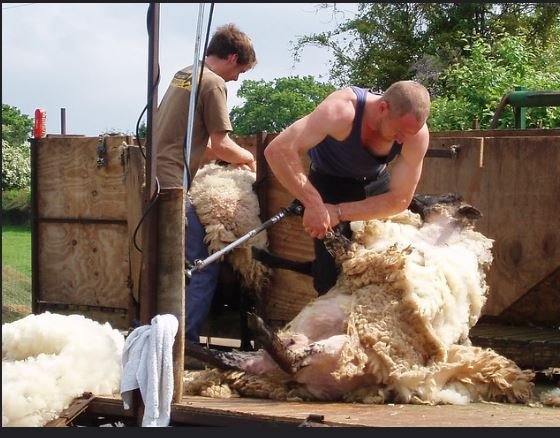Australia, one of the world’s largest wool producers, is considering Bangladesh as a potential alternative to China for wool processing. This shift opens a significant opportunity for Bangladesh to scale up its high-value wool apparel exports. The country aims to increase its annual wool garment exports tenfold, targeting $1 billion within the next five years.
Current Status of Wool Apparel Exports
Currently, Bangladesh produces and exports high-value woolen suits, shirts, pants, and knitwear sweaters, using raw materials imported from China, Italy, and England. However, due to the lack of domestic wool yarn or fabric production, Bangladesh’s progress in capturing the global wool apparel market has been limited. Globally, the wool fiber market is valued at approximately $17 billion, with Australia and China dominating.
Potential for Local Wool Processing
Entrepreneurs in the sector believe that setting up wool processing units in Bangladesh would enable local production of wool yarn and fabric. This would significantly reduce lead times (the time between receiving an order and delivering the final product), enhancing competitiveness. Currently, Bangladesh lags behind in this aspect, leading to a lack of confidence from international buyers when placing orders for wool apparel.
The Ministry of Commerce recently hosted a meeting attended by a delegation from Wool Producers Australia, led by CEO Jo Hall, to explore the feasibility of establishing wool processing units in Bangladesh. Representatives from the Bangladesh Textile Mills Association (BTMA) and other apparel sector leaders were present.
Australia’s Interest in Diversifying Wool Processing
During the meeting, Australian representatives expressed keen interest in supporting Bangladesh’s wool processing sector. They proposed mutual networking to explore the possibility of expanding wool processing capabilities in Bangladesh. With Australia producing around 80% of the world’s wool, but relying heavily on China for processing, they are now looking for alternatives due to geopolitical shifts. Bangladesh, with its existing textile infrastructure, presents a strong alternative.
A Growing Opportunity for Bangladesh
Salahuddin Zaman Khan, Vice President of BTMA, stated that Australia is the largest producer of wool globally, but about 80% of their wool is processed in China. Due to changing geopolitical dynamics, Australia seeks to reduce its dependence on China, and Bangladesh stands as a viable alternative. According to Khan, this presents a great opportunity for Bangladesh to enter the wool processing market.
In the past, Bangladesh mainly produced cotton yarn, valued at around $1.50 per pound. Over the last 15 years, the country has progressed to producing linen yarn, which is priced at $9 per pound. Khan said that the next step is to start producing wool yarn, with premium quality cashmere wool priced at around $76 per pound and standard merino wool at approximately $13 per pound.
Limited Domestic Wool Apparel Factories
Currently, only a few factories in Bangladesh, such as East West Group and Energypac Fashions Limited, are involved in wool apparel exports. Energypac Fashions Limited produces around 15,000 suits annually, with some made from mixed yarns, including wool fabrics. These suits retail for around $400 each.
The Managing Director of Energypac Fashions Limited pointed out that after receiving an order, the company spends around 45 days opening Letters of Credit (LCs) and importing raw materials, resulting in delays that make them less competitive. If local wool yarn and fabric production were available, it would increase buyer confidence and reduce lead times.
He added that with local production, Bangladesh could significantly boost its export competitiveness, aiming for a target of $1 billion in wool apparel exports within five years. Currently, wool apparel exports from Bangladesh amount to approximately $100 million annually.
Challenges: Import Duties on Wool Fibers
Despite the potential, the high import duty on wool fibers remains a significant challenge. Currently, the import duty on wool fibers is around 38%, making it difficult for exporters to remain competitive when sourcing materials from abroad. Entrepreneurs have been advocating for tax relief on wool fiber imports, similar to the tax exemptions provided for cotton imports, to support the growth of the wool garment sector.
BTMA officials mentioned that they have been requesting the National Board of Revenue (NBR) for duty waivers on the import of wool fibers, yarns, and fabrics for several years, but progress has been slow. During the meeting with the Australian delegation, BTMA once again raised this issue, seeking support from the Ministry of Commerce.
Global Wool Market and Future Prospects
The global wool fiber market is estimated to be worth over $30 billion, though some international research reports suggest a figure closer to $17 billion. With a compound annual growth rate (CAGR) of 5.5%, the market is expected to reach nearly $25 billion by 2030.
Bangladesh has the opportunity to capitalize on this growing market by establishing local wool processing facilities, enabling it to reduce reliance on imports, enhance export competitiveness, and attract more international buyers.
